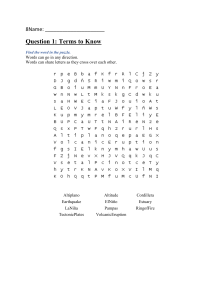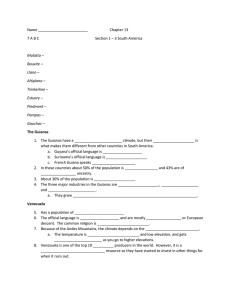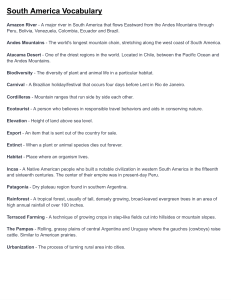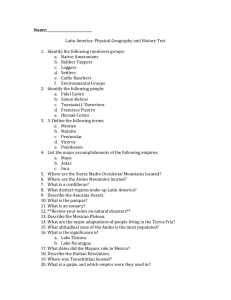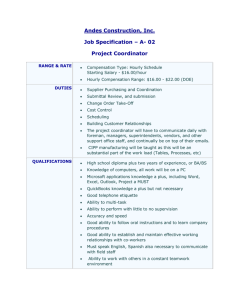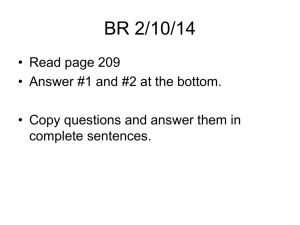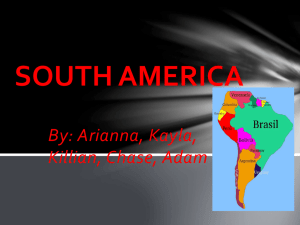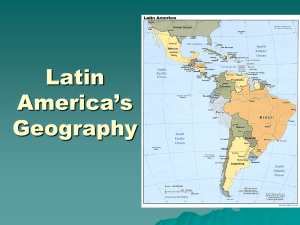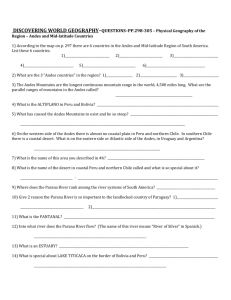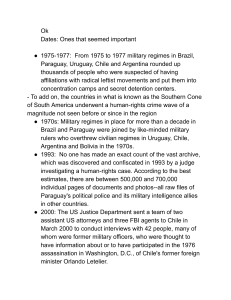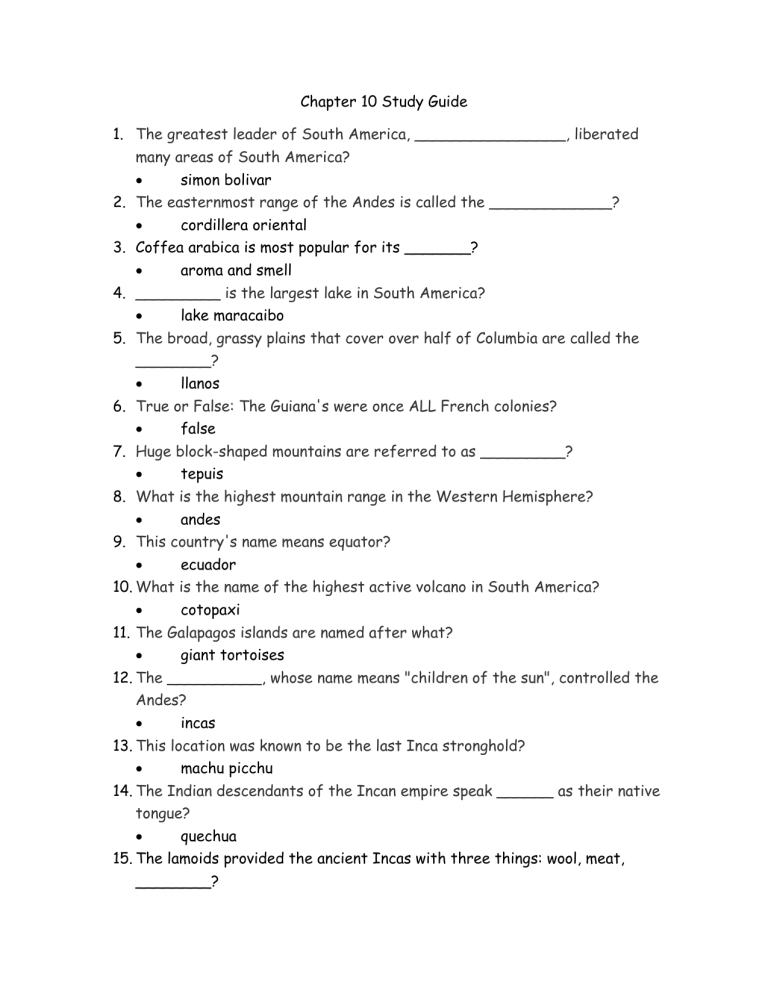
Chapter 10 Study Guide 1. The greatest leader of South America, ________________, liberated many areas of South America? simon bolivar 2. The easternmost range of the Andes is called the _____________? cordillera oriental 3. Coffea arabica is most popular for its _______? aroma and smell 4. _________ is the largest lake in South America? lake maracaibo 5. The broad, grassy plains that cover over half of Columbia are called the ________? llanos 6. True or False: The Guiana's were once ALL French colonies? false 7. Huge block-shaped mountains are referred to as _________? tepuis 8. What is the highest mountain range in the Western Hemisphere? andes 9. This country's name means equator? ecuador 10. What is the name of the highest active volcano in South America? cotopaxi 11. The Galapagos islands are named after what? giant tortoises 12. The __________, whose name means "children of the sun", controlled the Andes? incas 13. This location was known to be the last Inca stronghold? machu picchu 14. The Indian descendants of the Incan empire speak ______ as their native tongue? quechua 15. The lamoids provided the ancient Incas with three things: wool, meat, ________? leather 16. The Peru Current causes nearby air to be ______________? cold and dry 17. La Paz, the capital of __________, is the world's highest capital at 12,000 feet? bolivia 18. What is the second largest lake in South America? lake titicaca 19. The ridges and valleys east of the Andes are called the _________? yungas 20. Most Bolivians live on the __________? altiplano 21. The ________ desert is considered the world's driest desert? atacama 22. What is the capital city of Chile? santiago 23. Chile has one of the world's few natural deposits of _________? sodium nitrate 24. This was named for the first Englishman to circumnavigate the globe? drake passage 25. Below the tip of the South American landmass lies the treacherous strait of ________? magellan 26. Free-market reforms were proposed by ____________ in Chile? augusto pinochet 27. Another word for an ocean inlet is an _________? estuary 28. Which man led Argentina into debt and economic ruin? juan peron 29. What is the capital city of Argentina? buenos aires 30. The region on the eastern side of Argentina known as the low plains are called what? pampas 31. Montevideo is the capital of _________? uruguay 32. The most dense/thorough population of Europeans in South America is in what country? uruguay 33. What is the capital city of Paraguay? asuncion 34. The ________________ gave Portugal all lands east of the Line of Demarcation? treaty of tordesillas 35. ____________ declared independence from Brazil and became King? dom pedro 36. The widest waterfall in the world is __________? Iguacu falls 37. The _________ river system drains the largest area in the world? amazon 38. Constant clearing of trees in the Amazon cause poor soil through the process of _______? deforestation 39. Why is much of South America's Pacific Coast extremely dry? EXPLAIN much of south america's pacific coast is extremely dry because the mountains are a barrier and the andes prevent moisture from reaching the coast. weather goes from east to west. 40. What does the presence of advanced civilizations in South America long before European contact demonstrate about the nature of the people that live there? How would your conclusion contradict non-Christian philosophies? Humans have lived in the Americas for over ten thousand years. Dynamic and diverse, they spoke hundreds of languages and created thousands of distinct cultures. Native Americans built settled communities and followed seasonal migration patterns, maintained peace through alliances and warred with their neighbors, and developed self-sufficient economies and maintained vast trade networks. They cultivated distinct art forms and spiritual values. Kinship ties knit their communities together. But the arrival of Europeans and the resulting global exchange of people, animals, plants, and microbes—what scholars benignly call the Columbian Exchange— bridged more than ten thousand years of geographic separation, inaugurated centuries of violence, unleashed the greatest biological terror the world had ever seen, and revolutionized the history of the world. It began one of the most consequential developments in all of human history.
